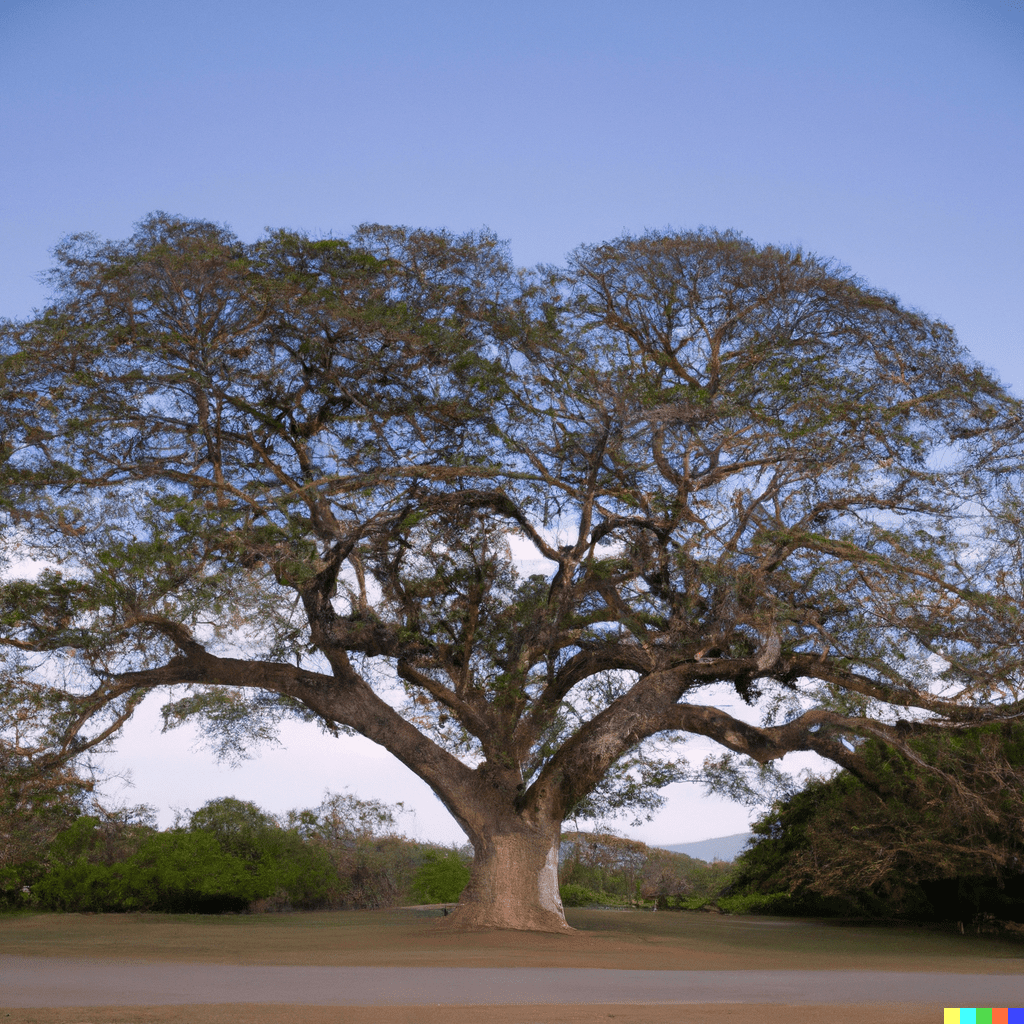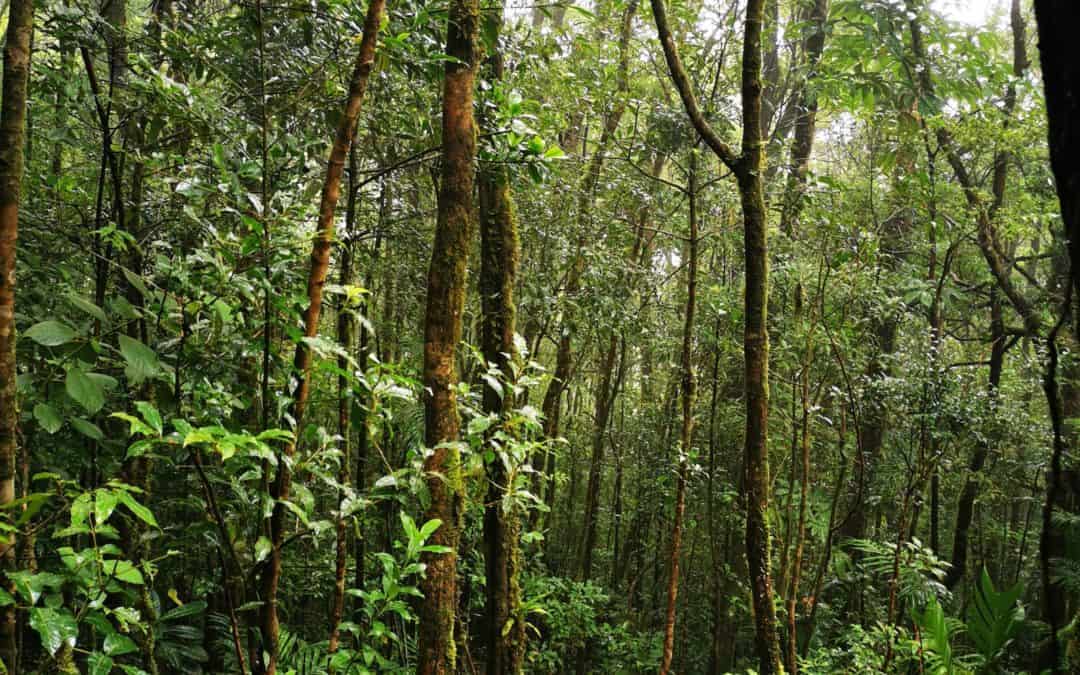Costa Rica has captured the attention of travelers worldwide due to its diverse and abundant biodiversity. Among the rich flora, trees are especially important and stunning. Not only do they provide shade in our hot and humid climate, but they’re also the lungs of the planet, purifying the air we breathe. Additionally, recent studies have even revealed that trees can provide positive energy vibrations which are essential for our wellbeing. There are approximately 60,000 arboreal species on planet Earth; in Costa Rica alone there are 2,300 of them! If you’re looking to learn more about Costa Rican trees, book your private tour with us and meet some of the top 10 representatives this country has to offer.
1.The Onagraceae (Hauya elegans subsp. Cornuta)
The Onagraceae (Hauya elegans subsp. Cornuta), known in Costa Rica as El guayabón supara, can only be found in the Central Valley of Costa Rica and access to these trees is very restricted. The beauty of these trees is undeniable; with bark that tends towards gray color and scaly texture, their young foliage presents soft green and reddish tones. Flowers of these majestic trees are pollinated by birds, measure 8 centimeters long and exude a beautiful scent from the large white petals with a reddish base. At the end of the twigs, new leaves form very bright red and green rosettes which are home to small metallic beetles. Moreover, this tree is known for its extremely hard wood.
Image courtesy of wlcutler
2.The Soncoya (Annona purpurea)
Native of low and hot lands of all the Pacific Coast of Costa Rica, the Soncoya features oblique branches, with very long leaves and a well-extended canopy. The tree gives very large and heavy fruits, which is sweet and delicious, a delicacy for wild animals. Some Costa Rica nature scientists assure that the Soncoya is the wild species that our Mesoamerican indigenous learned to cultivate giving rise to the well-known guanabana (Annona muricata) however, the fruits are different, being the Annona purpurea preferred by many.

3. The Glory Bush (Tibouchina lepidota)
The Glory Bush, otherwise known as “El Sietecueros” in Costa Rica, is an exceptional tree that catches the attention of many for its thick crust and small stature. Its wood is strong, and it has double and twin spines on its trunk. El Sietecueros can be found blooming with beautiful light lilac-colored flowers during the months of April and May. This tree is native to the North Central Pacific region of Costa Rica.

4. The Sapranthus Palanga
Known in Costa Rica as El Palanco
The Sapranthus is a simple tree that usually goes unnoticed. However, its magic lies in demonstrating how wise nature is by developing ways of subsisting. This fascinating tree of Costa Rica nature evolved millions of years ago, causing its flowers to expel a strong smell of meat. This in order to attract their natural pollinators, flies. Another very interesting fact about this species is its kinship with the tree of Ilan-Ilan famous for the delicious smell of its flowers used in expensive perfumes. In addition, it is also a family of the Soursop tree and the Annona, whose fruits are delicious, while the fruits of El Palanco are not edible having the appearance of guineas.

Image courtesy of Barry Hammel
5. The Yellow Elder (Tecoma stans)
The brilliant yellow elder (Tecoma stans) is a landmark of Tico nature, often found growing in fields and open spaces. Known locally as El Vainillo, the colorful tree stands out from its surroundings with bright yellow leaves and fragrant flowers that draw butterflies, bees and hummingbirds into its canopy. Additionally, due to its soft wood, it can be pruned to create various ornamental shapes. Furthermore, the rough bark is suitable for hosting epiphytic plants such as orchids and ferns. Finally, the beautiful wood of the yellow elder tree is also used to make decorative handcrafts.

6. The Purple-heart (Peltogyne purpurea)
The Purple-heart (Peltogyne purpurea), also known as El Nazareno in Costa Rica, is a hardwood tree with beautiful purple-colored wood. This species was once classified as endangered due to its high price and shortage of stock in the market. This prompted Costa Rica to declare it a protected species, banning any commercialization or cutting of these trees. You can identify these trees easily from their gray cylindrical trunks covered with lenticels or black warts, typically found in national parks and protected areas located along the Pacific Coast of Central and Southern Costa Rica.

7. The Pitanga (Eugenia uniflora)
The Pitanga (Eugenia uniflora) is a tree commonly seen in rural areas of Costa Rica, often found adorning the gardens and patios of homes. The fruits derive from this tree are black when ripe, featuring a sweet flavor that can be used for juices, jellies, wines, vinegars and desserts. Furthermore, these fruits are highly nutritious boasting substantial amounts of vitamin A, iron, phosphorus and calcium. In terms of visual traits, Pitanga trees feature small thin stems with broad canopies composed of around one hundred bright green leaves. On the other hand, small white flowers hang from the tree further contributing to its overall aesthetic value as they attract bees and other insects. Finally, its resin also helps ward off flies naturally.

8. The White Frangipani (Plumeria pudica)
The White Frangipani, or Mapuche as it is known in Costa Rica, was thought to be extinct a few years back. However, due to conservation efforts put in place by the country, this species can now be found flourishing in several parks and gardens, especially in the Central Valley region. Its stylised trunk gives it a high aesthetic value which makes it perfect for small urban and residential areas. It has wide panduriform leaves that are dark green in colour and its flowers add an even more delightful aroma with their sweet scent.

Image courtesy of Ross Evans Garden Centre
9. The Brazilian Cedarwood (Cedrela fissilis)
The Brazilian Cedarwood (Cedrela fissilis), otherwise known as the Cedro Real, is an iconic tree of Costa Rica. Though it is becoming rarer due to deforestation, this tree can still be found in farmlands and forests. It is easily recognisable by its tall shape and narrow canopy of green leaves which hide bouquets of yellow flowers that attract many species of bees, insects and birds. The Brazilian Cedarwood also produces a small fruit which boasts an abundant bunch and is used for crafting objects. Additionally, its wood is highly regarded for its exceptional quality and often utilised both medicinally and for various uses.

10. The Guanacaste (Enterolobium cyclocarpum)
The Guanacaste, or Enterolobium cyclocarpum, is the National Tree of Costa Rica and one of the few species that can form almost pure forests on abandoned land. Known as cua-necaxtli by Mesoamerican natives due to its ear-shaped fruit, this fast-growing tree can reach a diameter of up to 2 times its total height. Not only is it prized for its timber, it gives fruits and seeds from just 8 years of age! What’s more, it belongs to the ATRAPA-CARBONO group, meaning it helps reduce carbon emissions in our atmosphere.

Come with us and discover these and more species of impressive trees of Costa Rica nature. Book your private and personalized tour.

